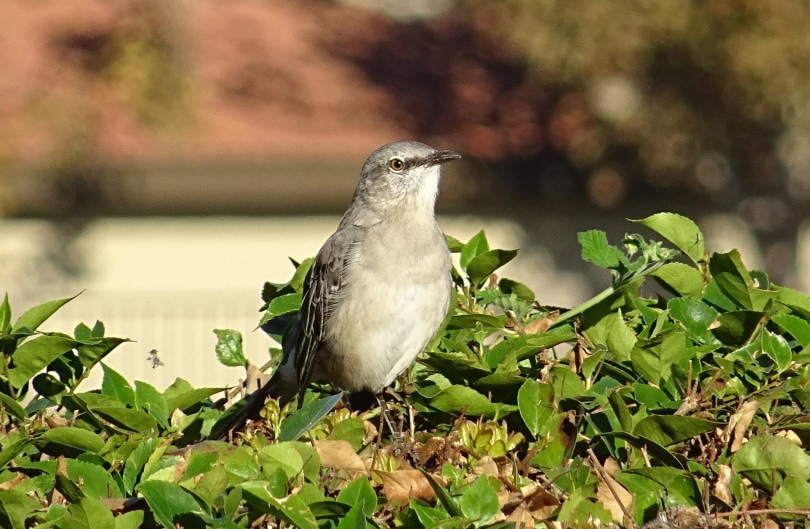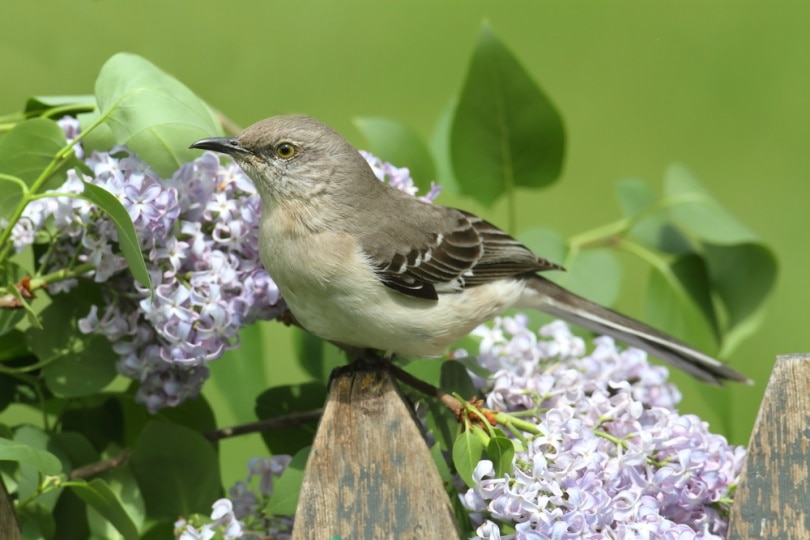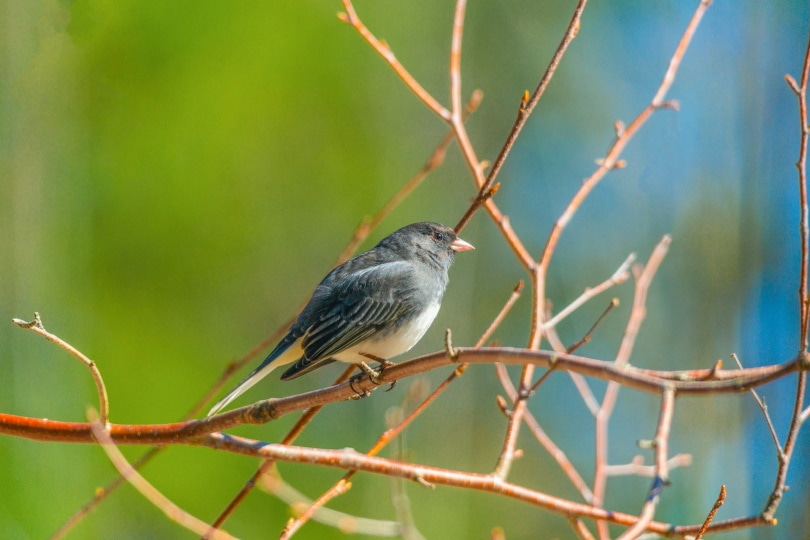What is Florida’s State Bird? How Was It Decided?
Last Updated on

As one of Florida’s year-round residents, it is no surprise that the common mockingbird (Mimus polyglottos) was chosen to represent the state of Florida. The mockingbird is an exceptional songbird and is known and named for the wide variety of songs in its repertoire. A typical mockingbird can sing up to 350 unique songs consisting of archetypal improvisations and imitations of other sounds. The sounds mockingbirds can mimic include those of other birds, animals, and urban sounds such as washing machines, blenders, sirens, car horns, and runny faucets.
Mockingbirds sing almost endlessly, often preferring to throw their concerts under the springtime moonlight. Scientists think that mockingbirds imitate the calls and songs of other birds to make their territory appear heavily populated, discouraging other birds from settling in. The mockingbird sings a unique setlist every day, endlessly tweaking and modifying their playlists depending on their mood.

How Was Florida’s State Bird Decided?
The mockingbird is so well-loved that it is not only the state bird of Florida but also of Arkansas, Mississippi, Tennessee, and Texas. Humans have prized the mockingbird for decades as it usually feeds on pesky insects and weeds. Mockingbirds were so popular as cage birds that they nearly disappeared from the East Coast in the 1820s. In fact, many people sold superior singers as pets for upwards of $50 in large cities, which has the buying power of approximately $1,500 today.
During the legislative session of 1927, Senate Concurrent Resolution No. 3 designated the mockingbird as Florida’s state bird. Although Florida residents admire the mockingbird, there is some controversy over its status. In October 2021, lawmakers filed three separate bills to change the state bird of Florida, suggesting that schoolchildren should vote on the matter and choose a new bird to fill the mockingbird’s place.

What Does the Mockingbird Look Like?
Mockingbirds are generally gray-brown in color and about 10 inches in length. Their wingspan can extend up to 15 inches, with males being slightly larger than the females. Mockingbirds are generally a paler gray on the breast and can be identified by bright, white patches on their wings and tail feathers.
The mockingbird can frequently be seen flashing their wings to show off the white patches on the undersides. Although many ornithologists chalk this up to a mating display, it is also thought that this behavior is used to startle insects and make them easier to catch. This display has also been observed as a defense mechanism, with mockingbirds harassing intruders on their territory by flagrantly flaunting their wing patches.

Fun Facts About the Mockingbird
- Male mockingbirds tailor their songs to the seasons and often have different playlists for the spring and fall.
- Female mockingbirds rarely sing and are generally much quieter than the males. However, they turn into prolific singers when their mate is away from their territory or when they are establishing one of their own.
- The mockingbird’s scientific name is Mimus polyglottos, which translates to “many-tongued mimic” in Latin.
- There are 16 species of mockingbird, but the Northern Mockingbird is the only one native to the United States.
- Mockingbirds are highly territorial and are known to swoop and dive at anything they consider a threat, including humans. They also have exquisite memories and can remember individual faces, a trait that is rarely observed in birds. If you disturb a mockingbird’s nest, you can expect to make an enemy for life.
- Mockingbirds are known to “date” other birds before deciding on a partner that they will mate with for life.
- Mockingbirds accompany their performances with “dances,” often jumping up and fluttering to the ground during their concerts.
- The female mockingbird is primarily responsible for building and maintaining a nest in which she raises two to four broods a year. The male mockingbird, however, is responsible for defending its territory and is tasked with looking out for potential predators.
See also:
- What Is Ohio’s State Bird?
- What Is Illinois’ State Bird?
- What Is Hawaii’s State Bird?
- What Is Kansas’ State Bird?
Featured Image Credit: ishnu Sarangi, Pixabay
About the Author Robert Sparks
Robert’s obsession with all things optical started early in life, when his optician father would bring home prototypes for Robert to play with. Nowadays, Robert is dedicated to helping others find the right optics for their needs. His hobbies include astronomy, astrophysics, and model building. Originally from Newark, NJ, he resides in Santa Fe, New Mexico, where the nighttime skies are filled with glittering stars.
Related Articles:
10 Types of Hummingbirds in Arkansas (With Pictures)
8 Types of Hummingbirds in Nebraska (With Pictures)
5 Types of Hummingbirds in Idaho (With Pictures)
3 Types of Hummingbirds in Mississippi (With Pictures)
8 Types of Hummingbirds in Kansas (With Pictures)
5 Types of Hummingbirds in West Virginia (With Pictures)
5 Types of Hummingbirds in Ohio (With Pictures)
Where Do Nuthatches Nest? Nuthatch Nesting Habits Explained
